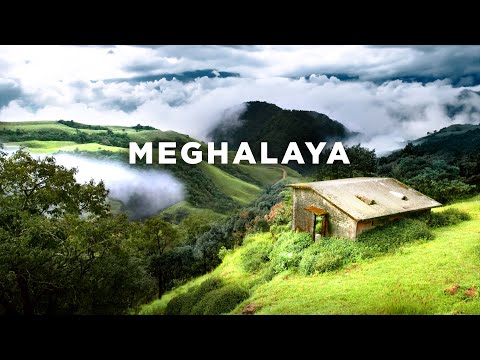
Nestled in the verdant hills of Meghalaya, a state aptly named ‘the abode of clouds’ in Sanskrit, lies the quaint village of Mawsynram. Located in North East India, this village is famed for holding the title of the wettest place on Earth, a distinction it often contests with its close neighbor Cherrapunji, just a few miles away. The significance of Mawsynram extends beyond its record-breaking rainfall; it offers an unparalleled glimpse into the rich cultural tapestry and unique ecological system of this remote region.
### Geographical Majesty
Mawsynram is situated approximately 65 kilometers from Shillong, the capital city of Meghalaya. It perches at an altitude of about 1,400 meters above sea level in the Khasi Hills. These hills intercept the moist monsoon winds that sweep in from the Bay of Bengal, resulting in copious amounts of rain dumped on this small locality. Mawsynram receives an average annual rainfall of around 11,871 millimeters (467.4 inches), predominantly during the monsoon months from June to September.
### Climatic Challenges and Adaptations
Life in Mawsynram comes with its set of challenges primarily due to its extreme weather conditions. The heavy rainfall results in frequent disruptions like landslides and floods which often isolate communities for days. Despite these hardships, the people of Mawsynram have adapted remarkably to their environment. The traditional ‘knups’ (grass-thatched huts) are designed with steeply sloped roofs to quickly dispose off rainwater.
One ingenious adaptation is the use of locally grown bamboo to construct bridges that are resilient against torrential rains – some even live and grow stronger over time as they are continually enveloped by secondary roots.
### Cultural Richness
The culture in Mawsynram is deeply influenced by matrilineal traditions typical to many tribal communities across Meghalaya. Property and familial lineage are passed down through women which enhances their status within society significantly compared to many other parts of India.
Local festivals such as Behdienkhlam, celebrated after sowing season ends or Nongkrem Dance Festival showcase rich cultural heritage intertwined with agricultural practices that emphasize community unity and thanksgiving for nature’s blessings despite adversities faced during heavy rains.
### Ecological Significance
Mawsynram’s ecological system thrives due to its high precipitation levels nurturing diverse flora and fauna making it a vibrant biodiversity hotspot within North East India’s lush green landscapes. The dense forests around Mawsynram are home to numerous endemic species including various orchids and ferns that thrive specifically under these wet conditions.
Moreover, sustainable practices such as rainwater harvesting have become paramount given global water resource scarcity concerns further highlighting importance maintaining balance between human needs ecosystem preservation efforts here at this globally significant meteorological phenomenon site.
### Future Prospects and Conservation Efforts
While tourism could potentially provide economic benefits for locals while offering world travelers a unique destination experience; there exists genuine concern regarding potential negative impacts increased human activity could cause such fragile environments – especially concerning waste management pollution issues alike.
Efforts by both governmental non-governmental organizations focusing on promoting sustainable tourism practices alongside community-based conservation initiatives ensure that beauty fragility “World’s Wettest Place” retained future generations admire learn from furthermore contribute towards broader climate change mitigation strategies considering abnormal patterns observed worldwide partly attributed anthropogenic factors.
In conclusion visiting “Meghalaya’s Jewel” – whether beholding rolling misty landscapes attending vibrant local festival or simply experiencing resilience those living under relentless downpour – provides not only escape into nature but also education how communities adapt coexist within one planet’s most extreme weather phenomena zones enriching sightseers’ perspective global environmental dynamics interconnectedness therein.
